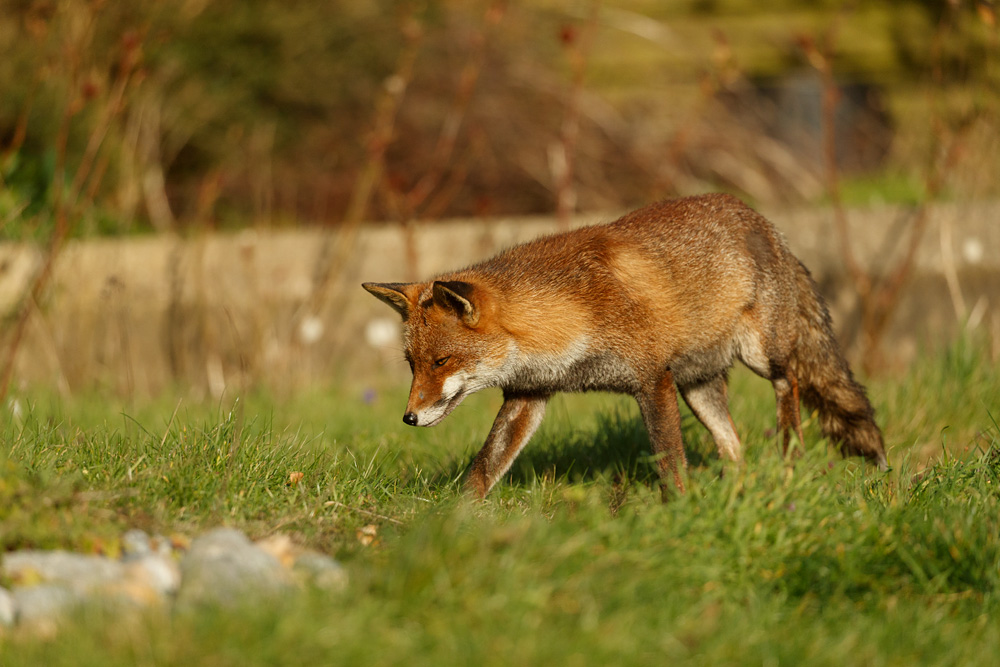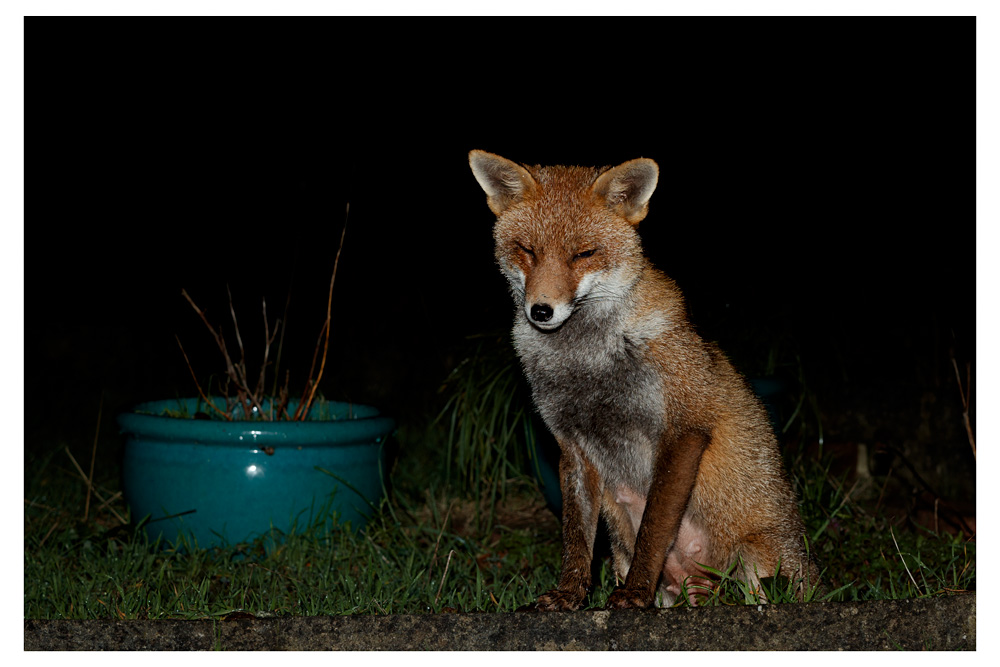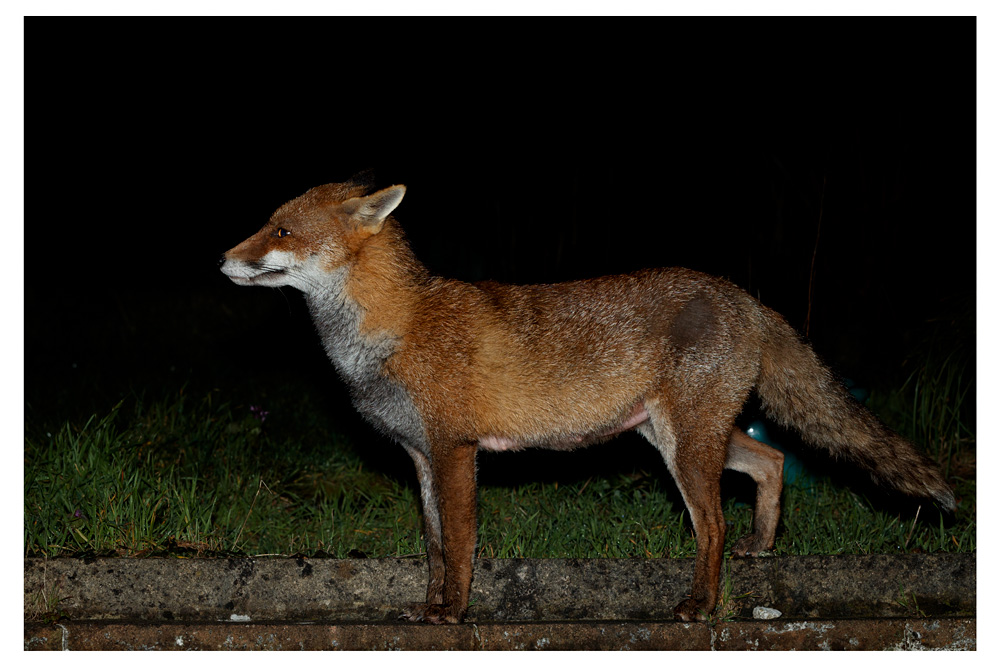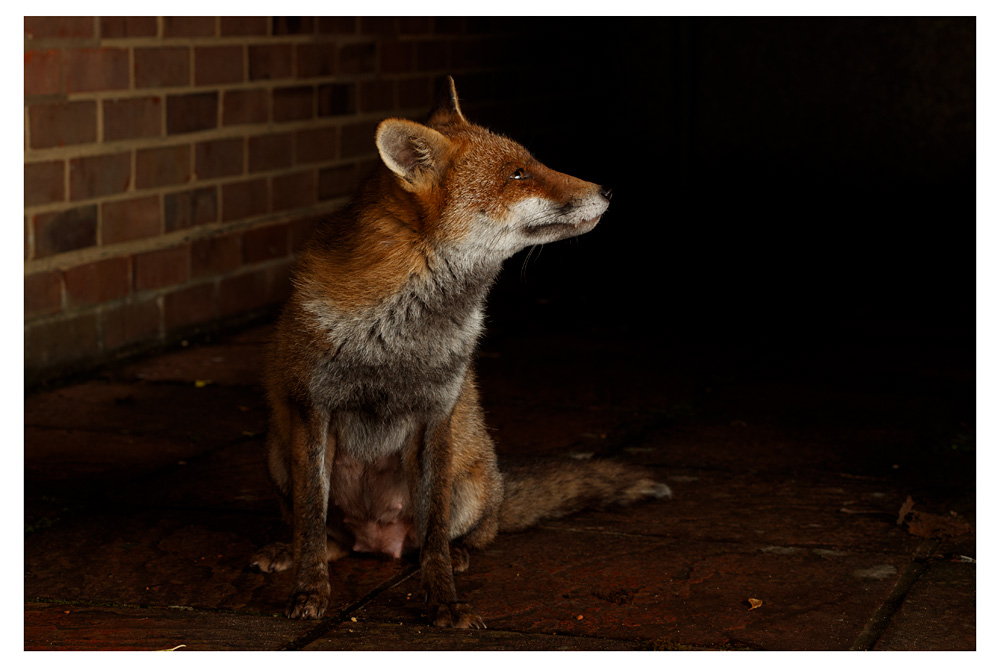Watching garden foxes is always an uncertain process. Some years there are several foxes, at other times they seem to vanish into the undergrowth and are barely seen. At the moment we have one regular visiting fox, a vixen who we’ve named Lopa. She’s about 2 years old, and last year appeared to give birth to her first litter. What happened is uncertain, but she very quickly abandoned or lost the cubs. She’s been pregnant again this year, and the initial signs are that she’s feeding some young. It’s too early to know whether she’ll persist, or indeed whether we will get to see any cubs but the early signs are good.

Foxes have a period of gestation of around 7 weeks, and generally the vixen will go to ground for a few days after giving birth. Urban foxes seem to leave the earth more readily, maybe because their range is much smaller or that the risk of predators is lower. I don’t really know, but most years we see vixens emerge on their own within about a week of birthing. What is known is that foxes are generally familial and that a vixen will often be supported by a second (non-breeding) female and the male fox. At this time of year foxes can often be seen rushing around, scavenging food or carrying prey.

Lopa more or less disappeared from view at the beginning of March. She made very brief appearances in the first week of the month (which is when I think she gave birth), and then more extended visits to the garden around the end of the second week, which is when the above photo was taken. You can see very clearly that she’s lactating. During the visit when I took that photo she was on high alert much of the time.

I don’t expect to see any sign of her cubs for several weeks, but we should get an idea of how things are progressing from her behaviour. And it will very obvious if she’s feeding a brood.

Kell Ambly
16 Mar 2023Hello! Decided to finally show my face around here, I have loved your blog and fox of the day for many years. I find your work wonderful and insightful and I am glad you’ve continued on with it since I first came across you in 2010.
Some questions if you feel up to it: How many foxes do you have visiting you currently, and what traits help you differentiate them?
Words
16 Mar 2023Hi Kell, thanks for posting and for the very kind words! I’m delighted that you’ve enjoyed the blog and stuck with it through the ups and downs over the years. As to your questions, more than happy to respond. At the moment Lopa is the only fox to ‘socialize’ with us. There are others, but they are shy and I’ve only seen them at a distance, or occasionally through windows. There’s an older dog fox – he’s quite distinctive, larger than the others, heavy set with a broad head. There’s also a younger male who has a very distinctive dark stripe on each side of his face. There’s one other fox I’ve seen running through – so that makes at least four. Generally we name them from something obvious (eg Stumpy had a shortened tail), or behavioural (Lopa was originally an interloper into the group of young foxes). It’s just a way of identifying them, so really whatever seems distinctive at the time.
Kell Ambly
23 Mar 2023Thanks for the response. I was looking at the photos of Stripe in the complete archive recently and he is stunning, I have never seen a fox with such striking face markings. With the number of foxes you have, do you ever hear scraps at night, I am assuming they aren’t all of the same social circle as Lopa, White tip and Stumpy?
The foxes here bicker a lot, though I don’t think they’re all enemies, just vocal as foxes are.
Words
23 Mar 2023Yes, Stripe is very striking. There’s a lot of scrapping at night. It goes through phases, but Autumn/Winter it can get crazy. Some of it is clearly just bickering within the group (we sometimes witness it), but some does sound more serious. One of the problems for urban foxes is that their ranges overlap a lot so fights can break out, interlopers try to move in (sometimes successfully) and other foxes are driven away. Keeping track is difficult, but yes it’s definitely noisy at times.
Adele
19 Mar 2023Hopefully she’ll bring her litter along.
Words
19 Mar 2023I’ll be watching out for that. You never can tell though.